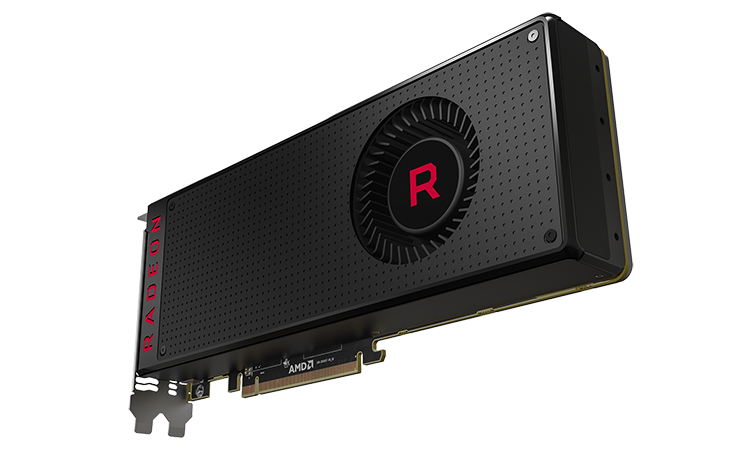Conclusion
Radeon RX Vega has been a long time coming. By pulling back from the hype train in recent months AMD has sought to temper expectations...The Radeon RX Vega 64 and RX Vega 56 GPUs are not the performance silver bullets that'll take down the best that rival Nvidia has to offer. Rumours and rumbling preceding the launch indicated these two cards hewn from an all-new architecture would (in)conveniently sidestep GeForce GTX 1080 Ti and focus instead on bringing genuine competition to GTX 1080 and GTX 1070.
Once you get past the disappointment that AMD is not in a position to challenge Nvidia in the truly upper echelons of performance, as it has done against Intel with Ryzen 7 and Threadripper CPUs, RX Vega begins to make more sense, yet we feel that AMD's PC gaming strategy has changed over time.
The combination of a GPU architecture more focussed on compute than ever before alongside new-fangled HBM2 memory and high-bandwidth cache memory feels like RX Vega isn't an optimal design for gaming first and foremost. Massive on-paper potential, which can be more readily realised in the professional environment, is diluted when presented in gaming form. In fact, to us, it feels overengineered as a gaming accelerator.
RX Vega 64 still manages to put up a decent fight against the efficient, streamlined and gaming-centric GeForce GTX 1080. AMD's priced it from £449, currently undercutting all partner cards from Nvidia by at least £50, so there is cautious reason for hope once AMD's AIBs get hold of it. A Sapphire Nitro version could certainly appeal.
That said, at 16:00 on launch day, the cheapest RX Vega 64 is now £550, tarnishing the GTX 1080-beating value potential. We can only hope that pricing goes back in line with AMD's recommendations soon, otherwise this Vega variant lacks lustre.
Switching gears, RX Vega 56 is more promising. Its purpose is to relegate the GeForce GTX 1070 from enthusiasts' minds, and our benchmarks show it beating out Nvidia's 14-month-old card with respect to gaming performance. Priced from £349, the very presence of RX Vega 56, whether Nvidia would care to admit it or not, has forced down the pricing of GTX 1070 to £330 on pre-order, and that can only be viewed as a good thing. Yet while the GeForce GTX 1070 is widely available, Radeon RX Vega 56 has yet to appear on shelves or listings.
It's also hard to argue against pairing an RX Vega 56 with a decent FreeSync screen for a smooth, stutter-free experience, at a price that Nvidia cannot (currently) match. This is why AMD has been attempting to take the burden off RX Vega alone and spread it over to the ecosystem, as the company has deliberately talked more about experiences than TFLOPs.
The Radeon RX Vega has been a long time coming. By pulling back from the hype train in recent months AMD has sought to temper expectations. RX Vega is not nearly good enough to depose Nvidia from PC graphics hegemony, nor will it be anytime soon. What it does do, however, is bring AMD back into the game in all but the £500-plus category.
Hits GTX 1070 hard
Well suited to QHD FreeSync
Frustratingly loud
Wattage thirsty
AMD Radeon RX Vega 56
HEXUS.where2buy
The Radeon RX Vega 64 and RX Vega 56 graphics cards will be available to purchase from Scan Computers starting August 14, 2017.
HEXUS.right2reply
At HEXUS, we invite the companies whose products we test to comment on our articles. If any company representatives for the products reviewed choose to respond, we'll publish their commentary here verbatim.















